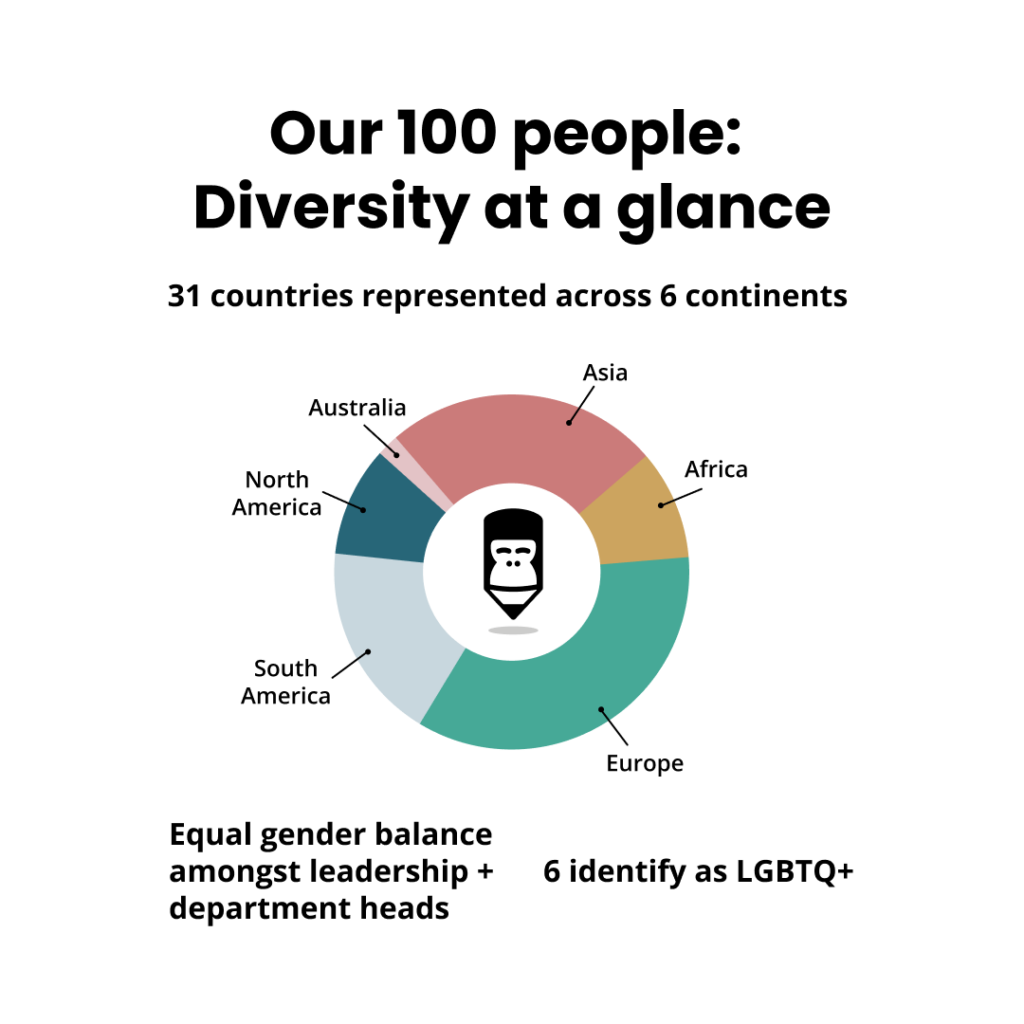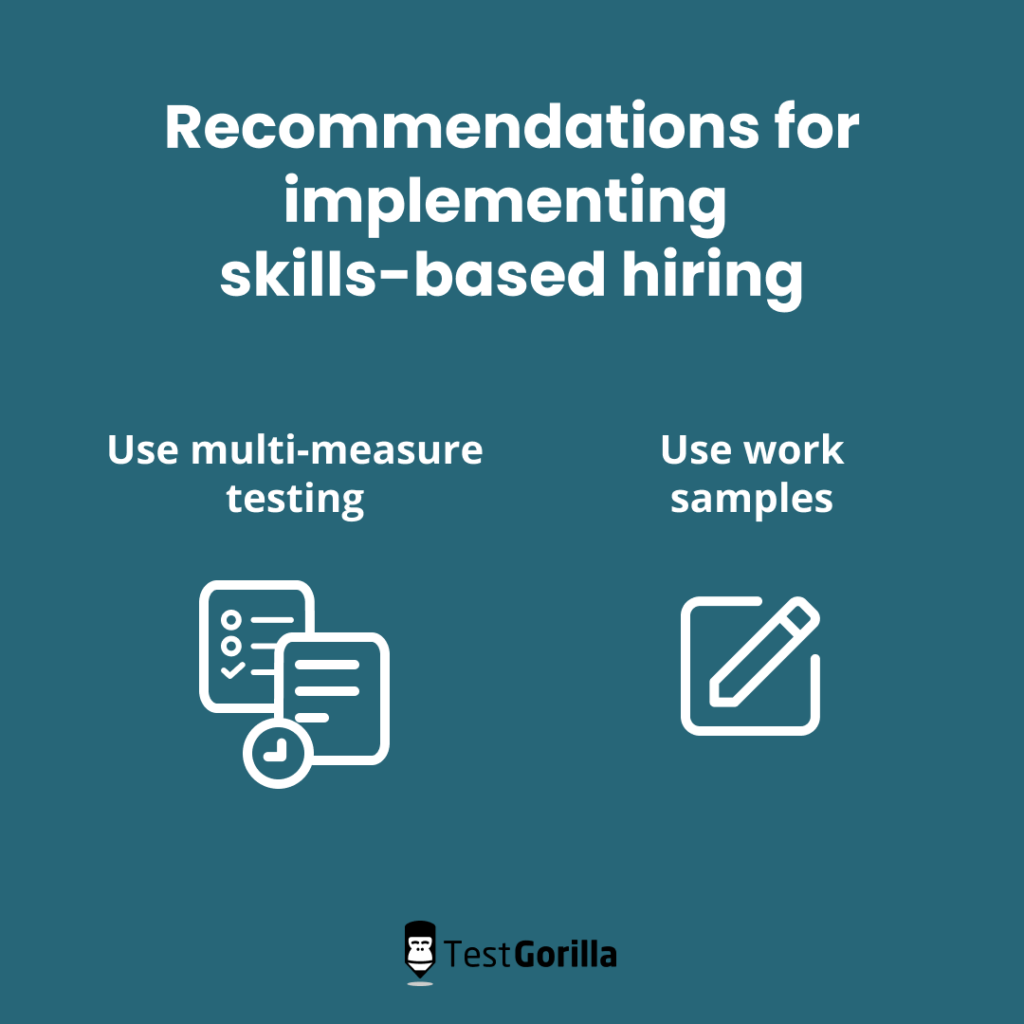We hired 100 people with skills-based hiring – here’s what we’ve learned
Around a decade ago, I started a social enterprise called Sukhi with my wife. We were selling handmade rugs from Nepal (Sukhi means “happy” in Nepali), and with every rug we sold, we were creating employment. We set it up as a remote company before Covid-19, and because of this, as well as the fact it was a social enterprise, when we started hiring people we were getting a crazy number of applications for a small business. There were up to 2,000 CVs for one job.
We had piles of CVs on the table and no idea how to find the best talent, let alone make the process fair. As a social enterprise, that was really important to us. How do we give people a fair chance?
Making things more objective and data-driven seemed to be the way to go. We began making our own little tests in Excel – literally hand-made. We’re not hiring experts. We didn’t want to spend time on this, and we weren’t very good at it. But still, it worked better than the CVs. So I put my customer hat on and started looking for a solution that tests the skills and values we’re looking for.
When I couldn’t find it, I put on my entrepreneurial hat. I knew I couldn’t be the only one having this problem. And I was amazed a solution didn’t exist.
I saw an opportunity, and so TestGorilla was born. Two years ago, Otto and I launched the company and started building a product and a team. Today, we hired our 100th person – and our team is spread across 31 countries around the world.
This is a big milestone, for me and Otto as entrepreneurs and for us as a company. It’s incredibly inspiring to be surrounded by so many people from different backgrounds, with different skills and talents; to provide them with employment, to learn from them as people and work with them as professionals. I feel proud and excited. I think that we’re an amazing group of people and that this is a really special company. And the interesting thing is that this is all testament to our own product.
Table of contents
Some learnings about skills-based hiring
We’ve been doing skills-based hiring from the beginning, hiring our own people with our own tests. We truly practice what we preach. TestGorilla the company is a case study for TestGorilla the product; we have a rich and constant feedback loop, and it informs a lot of the improvements we make. What’s more, for proof of the power of skills-based hiring, we don’t need to look any further than the people around us.
I want to reflect on this a bit. So, without further ado, here are my three main takeaways from having hired 100 people using skills-based hiring. I hope that this piece can provide some insight for other founders, leaders, or recruiters who want to leave CVs in the past and leap into the future of hiring.
You hire better talent
Speaking selfishly here, as a company owner and entrepreneur, you do just hire better talent when you use skills-based hiring. I have enough experience with CV-based hiring to know that this is true. Your applicant pool is so much bigger if you give everyone a fair chance, so it’s logical that you’ll hire better candidates.
We use the needle in a haystack example a lot: There’s so much talent out there, and you know they’re there, but you’ve got a huge pile of CVs in front of you with no way of knowing who those extremely talented people are.
With skills-based hiring, the best talent comes out on top regardless of its background and your unconscious biases, and regardless of the size of your haystack. You can find your needles because they get a chance to shine. So we’ve hired 100 needles.
You have more fun
It’s frustrating to spend so much time on people you’re never going to hire. This is one of the biggest problems with CVs.
With skills-based hiring, it doesn’t matter how many applicants you have. It’s incredibly efficient. If everyone does a skills assessment then the process is the same and will take you more or less the same amount of time, unless there are more people you want to interview. The best will demonstrate their skills and the data will float them to the top.
Hiring becomes faster and more exciting – you focus your time on the top people, get to know them, and hear their stories. It’s more fun. You get to spend your time in a very qualitative, meaningful way.
You make diversity possible
I’m not an expert on bias, but I know that most people aren’t actually biased or racist in a conscious, explicit way. They’re unconsciously biased. They want to find the best person, and they want to give everyone a fair chance, but they don’t know how to do it.
Skills-based hiring helps you make unbiased hiring decisions and build a diverse team. Since it changes the way you source and select candidates, it makes diversity possible in the workplace. When you give diverse candidates more of a chance – by hiring for proven skills rather than looking at CVs and inadvertently being drawn to people who are similar to you – you make diversity possible. It’s as simple as that.
We haven’t focussed that much on creating diversity at TestGorilla because we don’t have to. Because of the way we hire, we automatically have a very diverse team. You can see it in our leadership – 60% of our leadership roles are held by women, and in tech, the average percentage of women in leadership roles is 24%. Having diversity of thought, where people with different backgrounds from all over the world come together to tackle a problem, is amazing. Our ambitions and our customer base are global, so it’s useful; it helps us make sure we build the best possible product for our customers.
A lot of companies will have great diversity, equity and inclusion (DE&I) initiatives, but they’ll still use CVs for hiring, despite all the evidence that CVs invite bias even if you take the names off them. If you’re wondering why you’re not seeing diversity, try moving from CV-based to skills-based hiring.
…And the mistakes we made to learn them
I’m painting a pretty idyllic picture here, and I want to emphasize that getting to this milestone wasn’t, obviously, a total breeze.
The first thing to say is that we’ve had mis-hires. Not many; but there will always be mis-hires, no matter how well you do your hiring. There are so many angles to recruitment, and then after you hire someone there’s an enormous, softer, human side of things that data can’t account for. I have a lot of respect for recruiters and HR people: TestGorilla can’t replace them, it’s there to help them.
The next thing to say is that we’ve made mistakes, the main one of which was not daring to trust our own product. It sounds cheesy, but it’s true. In the beginning, if we heard that there was an amazing candidate with a really impressive CV or someone who was recommended by contacts of ours, and they didn’t score well on our test, we second-guessed our product.
At one point, when we were struggling to hire engineers, we went to headhunters. We found that the people we hired through headhunters tended to be less happy and motivated than the people who had applied to us directly. It makes sense; they’d seen our website and decided they’d like to work for us. So we kicked out the headhunters and posted the jobs everywhere with a link to our assessments, making our haystack as big as possible, and made some amazing hires this way. It solved our engineering hiring issue.
We fell for these things more than once – I guess in the beginning you can be skeptical about whether your product or your brand is as great as you hope it is. And the reverse almost never happened; the people who did well on the tests always did well in the company and stayed with us.
We also made mistakes when it came to how we implemented skills-based hiring. Based on these, I have two recommendations.
First, use multi-measure testing. It’s super-important to test for different skills; if you’re hiring a software engineer, for example, test their soft skills and values as well as their coding ability. Testing for one skill is simply not enough. This is critical.
Second, use work samples. It’s essentially another example of skills-based hiring – having someone do a piece of relevant work, something concrete, is incredibly predictive. It’s not where the emphasis lies with our product, but we ask for work samples from the top scorers from the assessment stage when we do our own hiring, and it’s something you can do with TestGorilla’s custom questions option.
The world of hiring is changing
To round this off, I want to look forward. I’m totally convinced that a big shift is taking place from CV- and network-based to skills-based hiring. Multiple trends – increased social awareness of bias, remote work unlocking global talent pools – point toward this shift. And it’s seriously here to stay.
I think we have a good shot at leading this trend or being winners in it. As an entrepreneur, I’d be thrilled if TestGorilla gets to have a leading role in driving this shift home. But it doesn’t even matter if we’re not – it’s going to be a really good thing for the world if hiring changes, and there’s a huge opportunity for positive social impact.
That being said, there are fireworks ahead of us at TestGorilla. Everyone from your local bakery to the biggest companies on the planet uses CVs, and we have the chance to change that.
We’re focussing on execution – making the right choices, prioritizing, and deprioritizing.
Most of all, though, we’re focussing on getting the right people on board and keeping them happy and productive. That’s what will make or break it for TestGorilla. And I feel very confident that we’ll get there, especially judging by the 100 people we’ve got so far.
Related posts
Hire the best candidates with TestGorilla
Create pre-employment assessments in minutes to screen candidates, save time, and hire the best talent.
Latest posts
The best advice in pre-employment testing, in your inbox.
No spam. Unsubscribe at any time.

Hire the best. No bias. No stress.
Our screening tests identify the best candidates and make your hiring decisions faster, easier, and bias-free.
Free resources
This checklist covers key features you should look for when choosing a skills testing platform
This resource will help you develop an onboarding checklist for new hires.
How to assess your candidates' attention to detail.
Learn how to get human resources certified through HRCI or SHRM.
Learn how you can improve the level of talent at your company.
Learn how CapitalT reduced hiring bias with online skills assessments.
Learn how to make the resume process more efficient and more effective.
Improve your hiring strategy with these 7 critical recruitment metrics.
Learn how Sukhi decreased time spent reviewing resumes by 83%!
Hire more efficiently with these hacks that 99% of recruiters aren't using.
Make a business case for diversity and inclusion initiatives with this data.





















